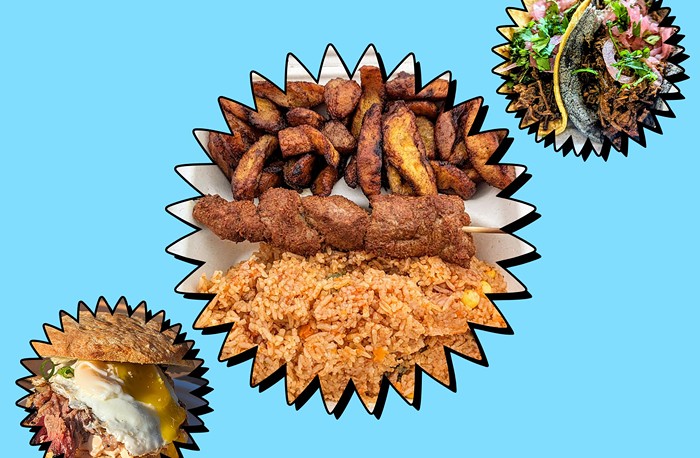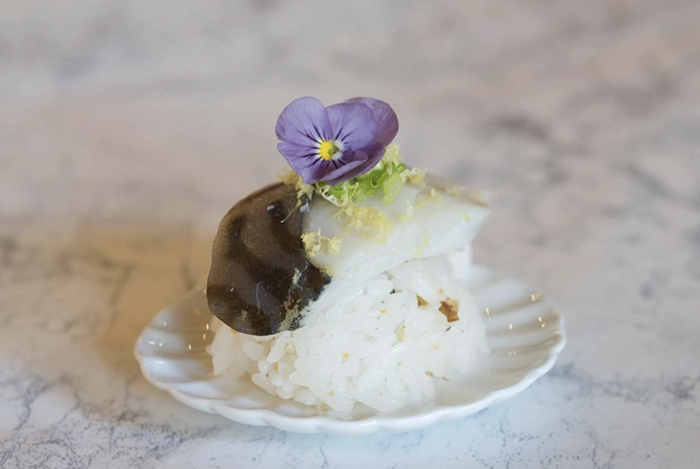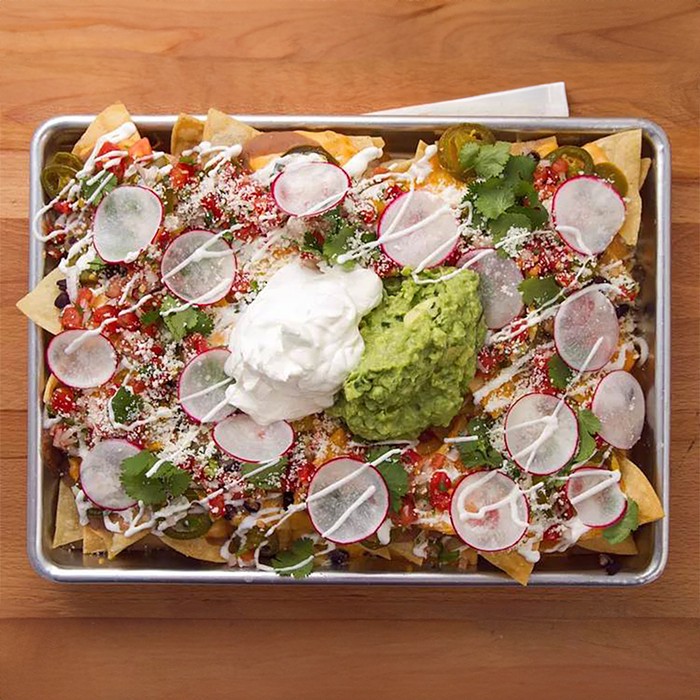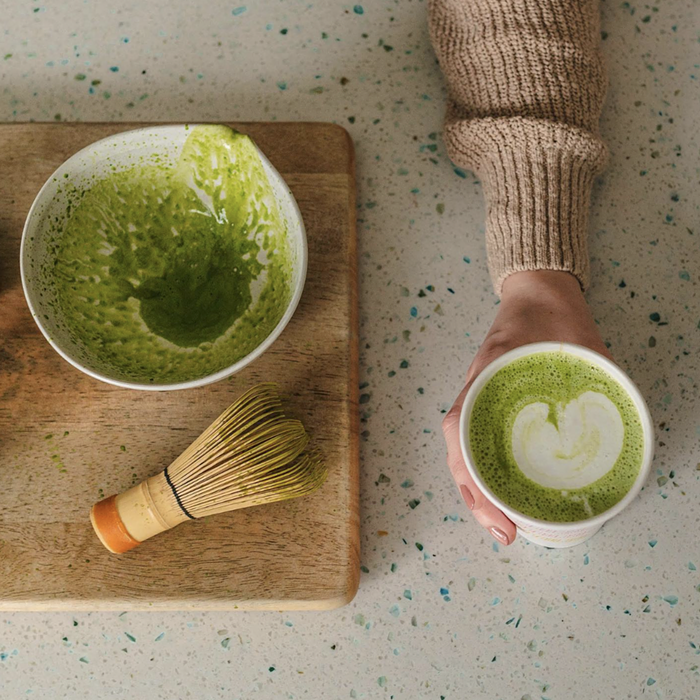Chili's Deli & Mart is something of a stealth restaurant. The front half houses a small, capable convenience store, offering candy, cigarettes, household sundries, and big cases packed with cold soda and beer. (The beer's to-go only, as Chili's isn't licensed for on-site consumption.) Then there's an open kitchen and deli counter, behind which works a smiling woman who doubles as server for those choosing to dine in. As a friend of a friend indelibly described it, eating at Chili's is "like eating in a church basement, if your church was in India and sold cigarettes." Diners sit in the back half of the store, in clean plastic chairs around clean plastic tables that wouldn't be out of place in a factory break room, and food is delivered on plastic trays with paper napkins. Walls are painted an insane acid green and adorned with scenic Indian photos culled from old calendars. It all takes on a hyperrealistic glow under the fluorescent lights, and it's all charming and strange.
Of course, southern Indian cuisine isn't strange to everyone, including but not limited to the millions of inhabitants of southern India. But I'm used to northern delights—rich saags; creamy curries; soft, warm naan—and Chili's was to be my first trip down south. The menu offered some recognizable items—the dumpling-ish samosa ($3.66), stuffed with tender spiced potato and green peas, was closely related to every samosa I've ever known and loved.
But beyond appetizers, the Chili's menu was a mystery, built around the entirely new-to-me components of the crepelike dosa and dense, doughnutty vada. The classic vada ($4.99), described on the menu as "white lentil donut served with coconut curry," was like some haute cuisine cousin of the hush puppy, made good and spicy with flecks of al dente onion and a crisp outer crust. It transformed into something most extraordinary when paired with the coconut chutney, a grainy white substance with the consistency of thin hummus and a subtle creamy sweetness that makes the savory flavors of the vada explode.
A similarly impressive experience unfolded around the masala dosa ($7.99), the popular standard that's the Big Mac of southern India, featuring a crepe-y dosa wrapped around a hearty, flavorful serving of potatoes and onions. In a sweetly ridiculous gaffe, the Chili's menu rearranges the letters of the word "crepe," with every dosa on the menu identified as some sort of "creep." My masala dosa—"a creep rolled with lightly spiced potato and onions"—was nonetheless astounding, thanks primarily to the dosa. The chewy, thin pancake's occasional crispy charred spots provided an extraordinary, ever-changing companion to the straightforward Indian veggie mix within. At its thickest center, the 15-inch-wide dosa was something not too far from Ethiopian injera, with butter in place of the vinegar taste; around its toasty edges, the dosa grew intensely rich and flavorful, almost like burned cheese. It was so delicious, my dining-mate and I were sure we'd never get enough, and so rich that splitting a single order was perfect.
I went back to branch out from the basics. The dhahi vada ($6.99) was described as "white lentil donut dipped in spicy yogurt," but instead of dipped, the vada were floating in a bowl of the soupy yogurt, which was alternately spicy and sweet. Call me an Indian-food dilettante, but as the vada became waterlogged (yogurtlogged?) in their liquid, my interest waned. The butter dosa ($7.49) was a simple cousin of the popular masala dosa—if the masala dosa is a fancy Indian burrito (and it is), the butter dosa is a fancy Indian tortilla, wrapped around nothing but itself and served with contending chutneys. It was good (goddamn, those crispy charred spots pay off big), but I missed the inner substance of the masala dosa.
Menu items are limited: a variety of dosas, a smaller variety of vadas, the samosas, a vegetable biryani ($9.99, the most expensive dish on the Chili's menu, and, unfortunately, nothing special). Addressing his kitchen's limited output, Chili's owner and manager (a fiftysomething Indian man who, in the nicest way possible, declined to share his name in print) explained, "We cook only electric"—via plug-in countertop appliances—"so no fast cooking. And frying is hard." He introduced me to his daughter—the friendly woman behind the counter, who does the majority of the cooking—then laid out Chili's backstory: Born two years ago as a general dollar store, the initial version of Chili's proved to be sporting ground for shoplifters, so they converted to a small convenience store (with everything on offer in clear view of the cash register) paired with a deli. First they trafficked in "regular Subway-type sandwiches," with limited success; then they switched to the food they know better than anything.
"We started making the dosas, and soon we had to put in the dining tables," he tells me, adding that he'd love to move to a traditional restaurant space when the time is right. For now, he keeps his wonderfully odd little box in the U-District—half convenience store, half southern-Indian deli—humming along. If you've long wanted a place in Seattle to get dosas and vadas, here it is. If you haven't long wanted one, you're going to want to try Chili's right away anyway. ![]()



















